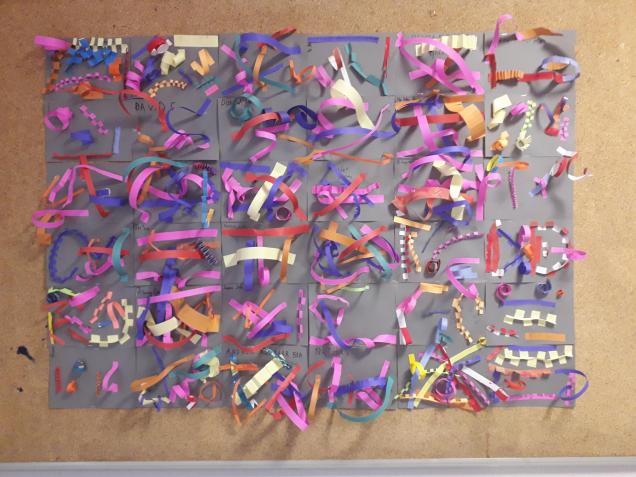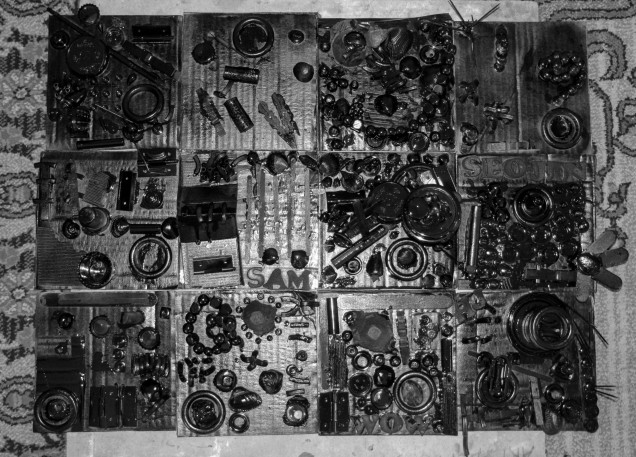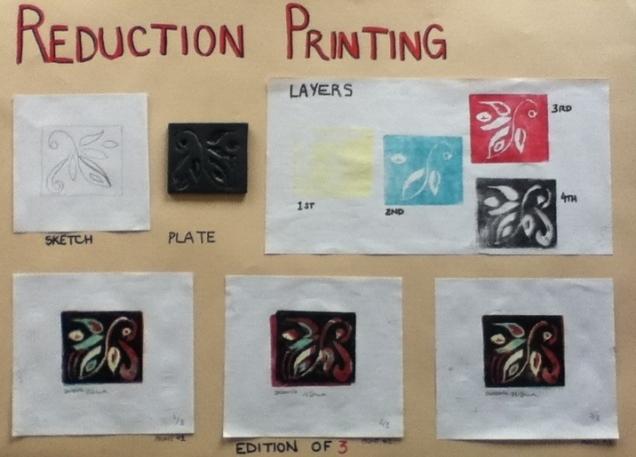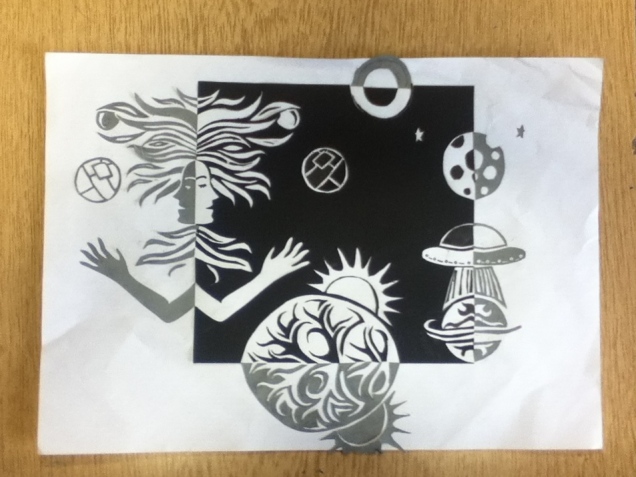We are already into the fourth week of school and the busyness does not slow down! Hard to believe that on this day five years ago, I moved to Istanbul. What a wild adventure it has been!
I wanted to share some of the middle school projects from our first weeks. It has been two whole years since I taught middle school, so it will take some getting used to again. I am glad I keep a blog because I have a record to look back on of all the wonderful projects from years past.

We started off the year with making portfolios- I will have to remember to share some photos!
The new middle schoolers, the fifth and sixth graders made paper line sculptures. These are hanging up in the hallway across from the art room. Each line represents something about the artist; for example, an orange tab if you have been on a train, or a green spiral if you like ayran (a Turkish yogurt drink).
This project may look familiar, it is typically one that I do with kindergarten (see here and here) but I have learned that it works for many ages. Thank you to Cassie Stephens once again for the inspiration!
Fifth through eighth graders also made paper foldables for the elements of art; this was information I knew I wanted them to get down from the beginning!
Here are a few of the finished foldables. Each of the seven elements of art were to be written in an illustrative way; to add meaning to the element. Inside are definitions for each element and further drawn examples.

























